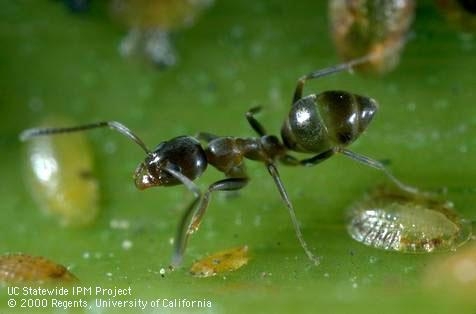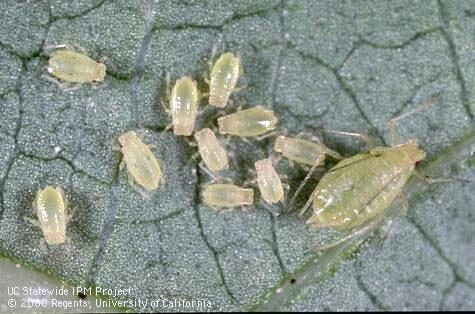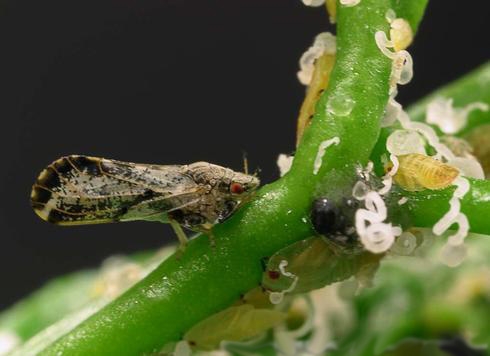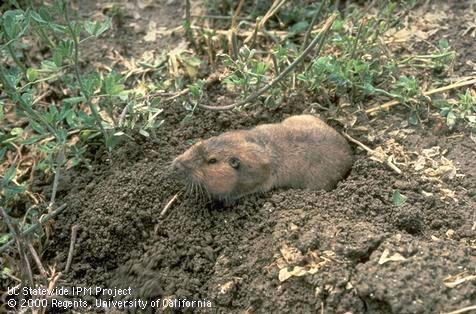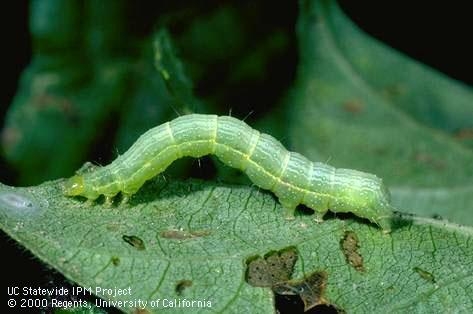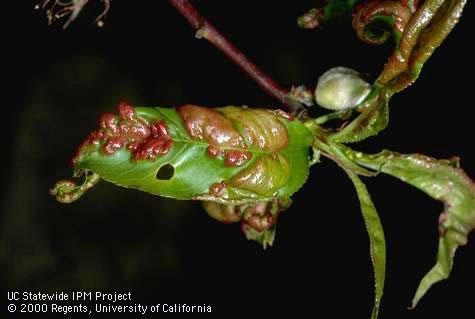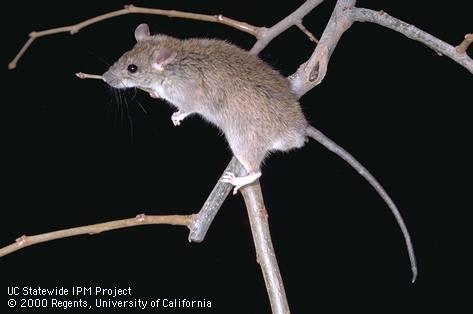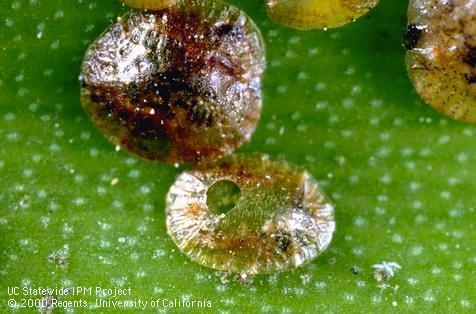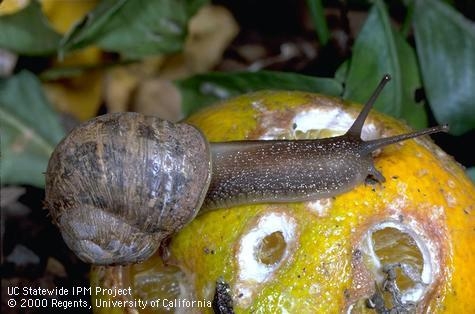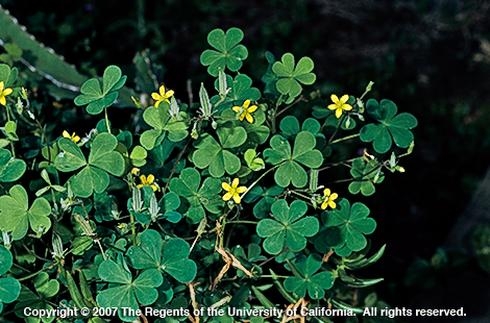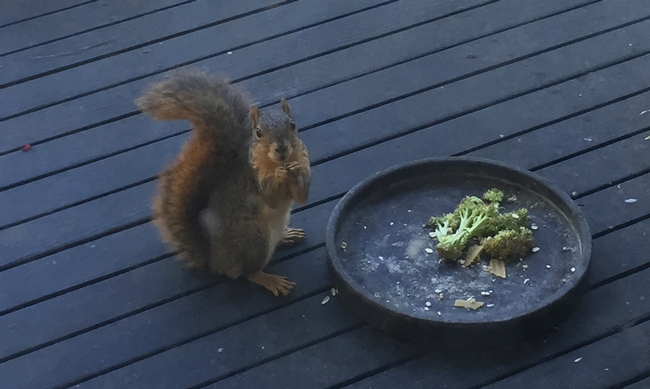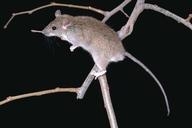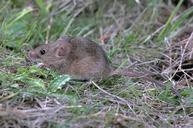Posts Tagged: rats
Top 10 pests in gardens and landscapes and how to control them
Download the free booklet at the bottom of the page!
1. Ants
Most people deal with ants around their home at some point. Because most ants live outdoors, focus efforts on keeping ants from entering buildings by caulking entryways. Follow good sanitation practices to make your home less attractive to ants. Spraying ants inside the home will not prevent more ants from entering. Use baits to control the ant colony. Pesticide baits work by attracting worker ants who then take the poison back to the nest where the entire colony, including queens, can be killed. In the landscape, ants protect honeydew-producing pest insects from predators, so use sticky barriers or insecticide baits to keep ants out of trees and shrubs.
- Find out more at http://www.ipm.ucanr.edu/QT/antscard.html
2. Aphids
Aphids can curl leaves and produce sticky honeydew, but they rarely kill plants and you usually can wash them off with water. When aphid numbers get high, natural enemies such as lady beetles (lady bugs), lacewings, syrphid fly larvae, soldier beetles and others frequently feed on them, eliminating the need for pesticides. Protect these good bugs by avoiding the use of insecticides that can be toxic to a broad variety of insects. Ants protect aphids from these natural enemies, so keep ants away from your garden as well. When pesticides are necessary, use less toxic products such as insecticidal soaps and oils.
- Learn more about controlling aphids here: http://www.ipm.ucanr.edu/QT/aphidscard.html
3. Asian citrus psyllid and Huanglongbing disease
The Asian citrus psyllid (ACP) and the deadly bacterial disease it spreads, Huanglongbing (HLB), threaten citrus trees in backyards and on farms. There is no cure or effective control method for HLB disease. All types of citrus—including oranges, grapefruit, lemons, and mandarins—are affected as well as a few closely related ornamentals. ACP and HLB have already devastated the Florida citrus industry, and now that it is in the Western U.S. it is threatening the California citrus industry as well.
- See where the outbreaks are in California with our helpful Asian citrus psyllid website: http://ucanr.edu/sites/ACP/Distribution_of_ACP_in_California/
- Contact your agricultural commissioner's office, or call the California Department of Food and Agriculture (CDFA) Exotic Pest Hotline at 1-800-491-1899 to confirm a find. Learn more about ACP here: http://www.ipm.ucanr.edu/QT/asiancitruscard.html
4. Gophers
Gophers are small burrowing rodents that feed on roots of many types of plants. A single gopher can ruin a garden in a short time, and gopher gnawing can damage irrigation lines and sprinkler systems. In lawns, their mounds are unsightly and interfere with mowing. Early detection is critical to prevent damage. Use both traps and underground fencing to manage gopher problems. Toxic baits are available but can pose threats to wildlife, pets, and children, especially in backyard situations.
- Learn more about protecting your garden and landscape from gophers here: http://www.ipm.ucanr.edu/QT/gopherscard.html
5. Leaf-feeding caterpillars
Caterpillars, which are the larvae of butterflies and moths, damage plants by chewing on leaves, flowers, shoots, and fruit. Caterpillars in fruit or wood can be difficult to manage because they are hidden most of their life and can cause serious damage even when numbers are low. However, many plants, especially perennials, can tolerate substantial leaf damage, so a few leaf-feeding caterpillars often aren't a concern. Handpicking and beneficial predators and parasites often provide sufficient control. Look for feeding holes, excrement, webbed or rolled leaves, caterpillars, eggs, and good bugs.
- Learn more here:http://www.ipm.ucanr.edu/QT/lfcaterpillarscard.html
6. Peach leaf curl
Peach leaf curl is a fungal disease that affects only peach and nectarine trees. Distorted, reddened foliage in the spring is a distinctive symptom. New leaves and shoots thicken and pucker and later may die and fall off. An infection that continues untreated for several years can lead to a tree's decline. To prevent peach leaf curl, treat peach and nectarine trees with a copper fungicide every year after leaves fall. After symptoms appear in the spring, any treatment will not be effective. When planting new trees, consider buying peach tree varieties that are resistant to the disease.
- To learn more about preventing peach leaf curl click here: http://www.ipm.ucanr.edu/QT/peachleafcurlcard.html
7. Rats
Rats eat and contaminate food, garden produce, and fruit, and transmit diseases to humans and pets. Manage rats by removing food and shelter, eliminating entryways into buildings, and trapping. Snap traps are the safest, most effective, and most economical way to trap rats. For Norway rats, place traps close to walls, behind objects, in dark corners, and in places where you have found rat droppings. For roof rats, place traps in off-the-ground locations such as ledges, shelves, branches, fences, pipes, or overhead beams. Ensure traps are out of reach of children and pets.
- Learn more about preventing and controlling rats here: http://www.ipm.ucanr.edu/QT/ratscard.html
8. Scales
Scale insects suck plant juices and are pests of many trees and shrubs. Infestations can cause yellowing or premature dropping of leaves, sticky honeydew, and blackish sooty mold. Plant parts can distort or die back, depending on the species and abundance of scales. Most plants tolerate low to moderate numbers of scales. Provide plants with proper cultural care, especially irrigation. Encourage scale predators such as lady beetles or lacewings and look for parasite emergence holes in scale covers. Use sticky barriers or insecticide baits to selectively control scale-tending ants. Consider replacing problem-prone plants because most scales are highly specific to certain plants.
- Learn more about controlling scale populations here: http://www.ipm.ucanr.edu/QT/scalescard.html
9. Snails and slugs
These slimy mollusks emerge from hiding at night and chew holes in leaves and flowers of many succulent garden plants and fruit. Management requires a vigilant and integrated approach that includes eliminating moisture and hiding spots, trapping, setting up barriers, and handpicking. Regularly remove snails from shelters you can't eliminate such as low ledges on fences, undersides of decks, and meter boxes. Place traps in your garden and dispose of trapped snails and slugs daily. Reduce moist surfaces by switching to drip irrigation or watering in the morning rather than later in the day. Consider snail-proof plants such as impatiens, geraniums, begonias, lantana, nasturtiums, and many plants with stiff leaves and highly scented foliage such as sage, rosemary, and lavender.
- Learn more about controlling snails and slugs with and without pesticides in your garden here: http://www.ipm.ucanr.edu/QT/snailsslugscard.html
10. Weeds in landscapes
Prevent weed invasions in new beds with good site preparation. Keep weeds out with an integrated program that includes competitive plants, mulches, and hand removal. Be particularly vigilant about removing aggressive perennial weeds. You rarely should need herbicides in established landscape plantings. Mulches prevent weed seed germination by blocking sunlight. Remove small weeds by hand before they flower and set seed. Use shallow cultivation or hoeing to remove annual weeds from ornamental plantings. Only use herbicides for special-problem situations before establishing new plantings or for difficult-to-control perennial weeds.
- Learn more about controlling weeds in your landscape here: http://www.ipm.ucanr.edu/QT/landscapeweedscard.html
To see all of the University of California's Statewide Integrated Pest Management Program's information on home, garden, and landscape pests, visit http://www.ipm.ucanr.edu/PMG/menu.homegarden.html
For other short pest “Quick Tips” like the ten above, see http://www.ipm.ucanr.edu/QT/
To read even more in-depth, peer-reviewed information on many other common home and landscape pests in California, see the Pest Notes series at http://www.ipm.ucanr.edu/PMG/PESTNOTES/index.html
Download your free UC IPM Quick Tips Booklet of the Top Ten Pests in Gardens and Landscapes and How to Control Them with the link below!
Don’t feed wild animals, says UC ANR pest expert
Did you know that it is illegal to feed wildlife? As tempting as it is to put out bread crumbs for birds or deer chow for Bambi, there are downsides to feeding wild animals, says a UC Agriculture and Natural Resources expert in human-wildlife conflict resolution.
California law states: “Except as otherwise authorized in these regulations or in the Fish and Game Code, no person shall harass, herd or drive any game or nongame bird or mammal or fur-bearing mammal. For the purposes of this section, harass is defined as an intentional act that disrupts an animal's normal behavior patterns, which includes but is not limited to, breeding, feeding or sheltering. This section does not apply to a landowner or tenant who drives or herds birds or mammals for the purpose of preventing damage to private or public property, including aquaculture and agriculture crops.”
Feeding wild animals may help non-native, invasive, nuisance and feral animals survive, says Niamh Quinn, UC ANR Cooperative Extension advisor in San Diego and Los Angeles counties.
“Many of these species have public health risks associated with them, which can cause serious illness in humans,” Quinn said. “Rats and squirrels carry fleas that transmit plague and feral cats also carry fleas that carry typhus. Both of these diseases can be transmitted to people and cause serious illness, or even death.”
During the summer of 2015, two tourists at Yosemite National Park contracted plague, but humans are not the only ones at risk from disease. Wildlife can also become more exposed to disease as a result of people feeding them.
The Pacific Flyway is a major north-south flyway for migratory birds in America, extending from Alaska to Patagonia. As part of the Pacific Flyway, California is a temporary home for many species of birds. Due to people feeding them, some of these birds no longer naturally migrate.
“Unfortunately, when we feed birds at parks with lakes and ponds, we are encouraging these unnatural situations and not helping the health of these bird populations,” Quinn said. “This can cause unnatural numbers of water fowl to congregate in ponds, rivers and lakes and creates perfect conditions for avian botulism and cholera to take hold. Bird die-offs can occur naturally in wilderness areas and are prominent in drought conditions due to low water resources.
Sustaining nonnative and feral animals can also have negative impacts on native wildlife, she said.
“For example, the eastern fox squirrel, which has now been released in many cities in the state, is competing with the native western gray squirrel,” said Quinn. “Sustaining the nonnative and invasive eastern fox squirrel could further aid in its distribution in the state, which would spell disaster for the native gray squirrel.”
Leaving nuts and seeds out for squirrels can also encourage other nonnative wildlife like roof rats and house mice.
“Not only do these species have public health issues associated with them, they also compete with native wildlife,” Quinn said. “They prey on bird eggs and can compete with native rodents for food resources.”
Indirect feeding of wildlife can also lead to serious conflicts between people and wildlife, Quinn warned.
“Bears that become accustomed to human food often have to be trapped and re-released and some are even euthanized,” Quinn said. “Coyotes are now common-place in some of our cities in California. Relying on human food could cause habituation of these wild animals and cause conflicts to rise. It is important that we cover our trash cans and make sure that we keep wildlife out of them.”
The California Department of Fish and Wildlife has an initiative called “Keep Me Wild” with the slogan “Wild animals don't need your handouts. They need your respect.” Quinn urges people to consider the long-term welfare of wildlife the next time they are tempted to feed wild animals.
For more information about managing pests around homes, visit the UC ANR Statewide Integrated Pest Management Program website: http://www.ipm.ucanr.edu/PMG/menu.homegarden.html.

